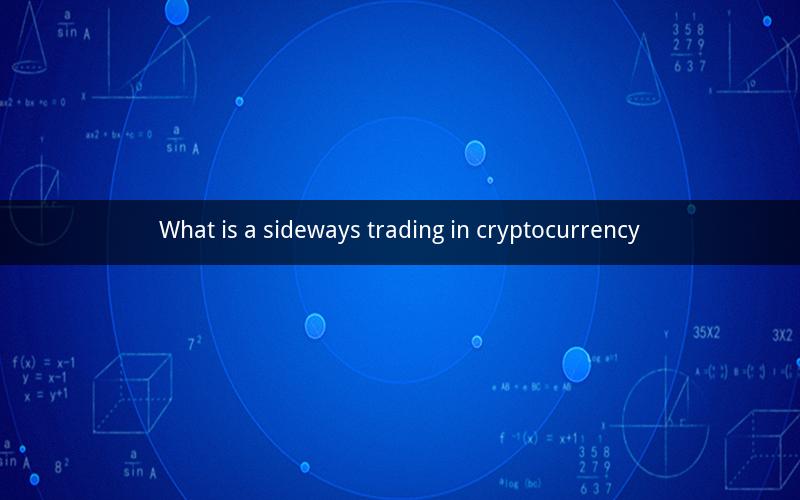
Cryptocurrency Sideways Trading: Understanding the Concept
Table of Contents
1. Introduction to Cryptocurrency
2. Understanding Sideways Trading
3. Factors Influencing Cryptocurrency Sideways Trading
4. Analyzing Sideways Markets
5. Strategies for Trading in a Sideways Market
6. Risks and Challenges of Sideways Trading
7. Conclusion
1. Introduction to Cryptocurrency
Cryptocurrency, a digital or virtual form of currency, has gained significant popularity in recent years. It operates independently of a central bank and relies on a decentralized system called blockchain to record transactions. Bitcoin, the first cryptocurrency, paved the way for the rise of numerous altcoins and other digital assets.
2. Understanding Sideways Trading
Sideways trading, also known as horizontal trading, refers to a market condition where the price of a cryptocurrency remains relatively stable without significant upward or downward movement. In this scenario, the price chart exhibits a horizontal pattern, resembling a flat line.
3. Factors Influencing Cryptocurrency Sideways Trading
Several factors can contribute to a sideways trading pattern in the cryptocurrency market:
3.1 Market Sentiment
Market sentiment plays a crucial role in sideways trading. If investors are uncertain about the future of a cryptocurrency, they may refrain from making significant investments, leading to a stable price.
3.2 News and Events
News and events, such as regulatory announcements or technological breakthroughs, can influence the sideways movement of a cryptocurrency. These factors can create uncertainty among investors, leading to a stable price.
3.3 Supply and Demand
The balance between supply and demand in the cryptocurrency market can cause sideways trading. If the supply of a cryptocurrency remains relatively constant while demand fluctuates, the price may remain stable.
4. Analyzing Sideways Markets
Analyzing sideways markets requires a different approach compared to upward or downward trends. Here are some key aspects to consider:
4.1 Price Patterns
Identify horizontal patterns on the price chart, such as consolidation or support/resistance levels, to determine the sideways trend.
4.2 Volume Analysis
Volume can provide insights into the sideways movement of a cryptocurrency. High trading volume during sideways trends may indicate strong support or resistance levels.
4.3 Indicators
Technical indicators like Bollinger Bands, Moving Averages, and Relative Strength Index (RSI) can help analyze sideways markets. These indicators can identify potential breakouts or reversals.
5. Strategies for Trading in a Sideways Market
Traders can employ various strategies to navigate sideways markets effectively:
5.1 Range Trading
Range trading involves buying and selling assets within a specific price range. Traders can set buy and sell orders at key support and resistance levels to capitalize on sideways movements.
5.2 Breakout Trading
Breakout trading involves entering a trade when a cryptocurrency breaks out of a sideways pattern. Traders can use technical indicators to identify potential breakouts and enter trades accordingly.
5.3 Hedging
Hedging involves taking positions in assets with a negative correlation to offset potential losses. Traders can use hedging strategies to mitigate risks in sideways markets.
6. Risks and Challenges of Sideways Trading
Sideways trading comes with its own set of risks and challenges:
6.1 Volatility
Even though sideways markets seem stable, they can experience sudden bursts of volatility. Traders must be prepared for unexpected price movements.
6.2 False Breakouts
False breakouts occur when a cryptocurrency breaks out of a sideways pattern but quickly reverses, leading to potential losses. Traders must be cautious when entering trades based on breakouts.
6.3 High Risk
Sideways markets can be unpredictable, making it challenging to determine the best entry and exit points. Traders must exercise caution and be willing to accept higher risks.
7. Conclusion
Sideways trading in the cryptocurrency market is a unique phenomenon that requires a different approach compared to traditional trends. Understanding the factors influencing sideways movements, analyzing sideways markets, and employing effective trading strategies can help traders navigate this challenging environment. However, it is crucial to be aware of the risks and challenges associated with sideways trading.
Questions and Answers
1. What is the primary difference between sideways trading and upward or downward trends?
- Sideways trading involves a stable price without significant upward or downward movement, while upward and downward trends exhibit clear directionality.
2. How can market sentiment affect sideways trading?
- Uncertainty among investors can lead to sideways trading, as they may refrain from making significant investments.
3. What are some common factors influencing sideways trading in the cryptocurrency market?
- Factors include market sentiment, news and events, and supply and demand.
4. How can traders identify sideways markets?
- Traders can analyze price patterns, volume, and technical indicators to identify sideways markets.
5. What strategies can traders use to navigate sideways markets?
- Strategies include range trading, breakout trading, and hedging.
6. What are the risks associated with sideways trading?
- Risks include volatility, false breakouts, and high risk.
7. How can traders mitigate risks in sideways markets?
- Traders can use technical analysis, risk management techniques, and be prepared for unexpected price movements.
8. Can sideways trading lead to significant profits?
- While sideways trading can provide opportunities for profits, it also involves higher risks and potential losses.
9. How can traders avoid false breakouts in sideways markets?
- Traders can use multiple technical indicators and confirmations to avoid false breakouts.
10. Is sideways trading suitable for all types of traders?
- No, sideways trading requires a different approach and can be challenging for traders who prefer clear trends.